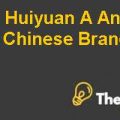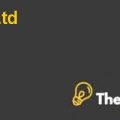Nissan Motor Company Ltd.: Building Operational Resiliency Case Study Solution
Recommendations to Nissan on How to Assess the Risk of Disruption in Supply Chain
The supply chain of a globally operating company becomes vulnerable to numerous disruptions. Such disruptions have the power to hamper the smooth flow of operations and disrupt the whole system of organization. Therefore, to assess the disruption risk, Nissan could have taken various measures such as; Nissan’s Global Disaster Control could have better as well as more strategically identified the risks. It could have identified, quantified as well as prioritized the risks and designed an effect ivemitigation plan in order to lower the severe effects of risks. Additionally, the risk of the tsunami could have been identified via Delphi techniques as it helps in the identification of possible risk.
Building a collaborative and strong relationship with the primary and secondary suppliers would have helped the company in knowing the supplier who had the ability to best serve alternative sources. This is due to the reason that the company must’ve gotten engaged with suppliers in case of any disruption possibilities. Therefore, the company needs to know each and every risk factor related to suppliers including their compliance with regulations, financial strengths, political stability in their nations and risk management practices. The company also needs to assure that it has enough suppliers to keep manufacturing products in case of any unfavorable situation. This is imperative for the generation of revenues and the continuity of business operations. Lastly, the company could have been proactive in enhancing visibility into the operations of supply chain in order to get to have a clear picture of the material flow.
Nissan’s Product Line Strategy
Broadly, a simplified product line strategy is adopted by Nissan Company in comparison to the market rivals. After the disaster caused the constraints, the company then adopted build to stock strategy for the models whose market demand is higher& build to order strategy for high customized and low demanded models. Since, the catastrophe had badly influenced the production process of the company, adopting such kind of strategy helped the company in manufacturing product which guarantees the profit margindespite of increasing its burden. The build to order strategy has been used with the core purpose of avoiding any wastage of material, maintaining operational efficiency, and generate a healthy profit margin. Furthermore, such product line strategy led the company towards stream lining the operations of business and product offerings with an ample increase in profits. The income flow has also improved its financial strength after rising itself up after every downfall and crisis.
As per the information provided in the case, Toyota, Honda and Nissan; all of these companies were highly affected by the disaster, but Nissan Company in particular suffered massive damage to its 6 production facilities.Hence the strategy adopted by company pulled it from draining scenario as by following the build to order strategy, the company became able to gain specialization of the manufactured products, which is because of producing product as per the expectation and specification of customers. Also, the strategy allows the company to omit the unnecessary inventory and make only those products that are demanded by customers. This, in turn, has given no scope for the dead stock of inventory.
Assessing & Evaluating Future Approach
Nissan Corporation has adhered to a number of operational challenges in its business operations to confront any kind of challenge in the near future. Several attempts have been made by the company with the intention of reducing the dependency and reliance on its factories located in international markets on Japanese manufactured components. It had significantly increased the localized cars’ production in several American regions from approximately 70 percent to 90 percent by the end of the year 2015. It has also put major emphasis on understanding the importance of depending upon secondary suppliers. There are many lessons which are learnt by the company from the disaster,due to which the company has contemplated to modify its method for an improved future, including the modification in the buying process of critical components specially, for the purpose of improving the business continuity and reducing the supply concentration risk to tier one – severe level to be less as compared to other tier levels.
Each and every organization strives hard to perform better in the future, so Nissan could have prepared even better strategies for the purpose of protecting itself from any unfavorable situation or disaster. The company should have a strong actionable business continuity plan (BCP) in place as it has the ability and potential to save lives, which helps in building or strengthening the confidence among customers and employees.It also assures the compliance with standards of the industry. Not only this, but it also preserves the company’s brand value but also the stellar reputation that the company has worked hard to achieve. It also helps in cultivating the resilient culture within an organization. Additionally, it has the potential to reduce the effects of disruption and the risk of financial loss.(Krell, 2018).
Currently, one of the tradeoffs that the management of the company makes is that the company has been continuing its manufacturing from the local base only, which is due to the reason that in case of production drop; there could be a shortage of product’s supply in the foreign or global market arena. The risk management process ensures successful planning, assists with preparation, helps in evaluation and maximizes the results. The company always seeks to strengthen its risk management process or system in order to prepare for any emergency situation including natural disasters in an effective way. The company should also maintain close communication with each of its global base as well as its suppliers to minimize the risk. The company has aimed to improve the resiliency through reviewing the disaster risk at its quickly expanding sites in the overseas market and strengthen the measures across the entire supply chain, which includes secondary, tertiary suppliers and beyond. By doing so, the company would become less prone to the detrimental disruption in the future ahead.
Conclusion
Nissan Motors is recognized as one of the leading, valuable and popular brand name with high global reach. The great Tsunami was amongst the most damaging natural disaster that were ever recorded in Japan. The disaster had destroyed and damaged the coastal factories as well as the plants, and had adversely affected the supply chains. Toyota, Honda, and Nissan all had suffered severe setbacks.For each location the company had immensely began recovery operations.The recovery committee emphasized on many practices, including supply allocation, production management, information sharing and empowering actions.
In order to avoid such massive effect of such devastating natural as well as accidental disasters, Nissan should maintain the database that involve all the data and information related to the employee details, in-transit inventory, manufacturing operations, production processes, stock details as well as other business-related activities.Building a collaborative and strong relationship with the primary and secondary suppliers would help the company in knowing the suppliers who would serve best alternative sources.The company has aimed to improve resiliency through reviewing the disaster risk at its quickly expanding sites in the overseas market, and to strengthen the measures across the entire supply chain, which includes secondary, tertiary suppliers and beyond. By doing so, the company would become less prone to the detrimental disruption in the future ahead.
Appendix A – SWOT Analysis
| Strengths | Weaknesses |
| § Strong brand power
§ Strong brand recognition § Leading innovator § Flexible business operation § Strong financial and non-financial performance |
§ No stronghold in emerging markets
§ Limited market share because of rigorous market competition |
| Opportunities | Threats |
| § Tap the emerging market and build an international brand
§ Joint venture with leading companies § Target rapidly growing automobile market |
§ Government regulation for the automobile sector
§ The increasing price of fuel § Intense market competition § Substitutes modes of public transport |
This is just a sample partical work. Please place the order on the website to get your own originally done case solution.
How We Work?
Just email us your case materials and instructions to order@thecasesolutions.com and confirm your order by making the payment here












